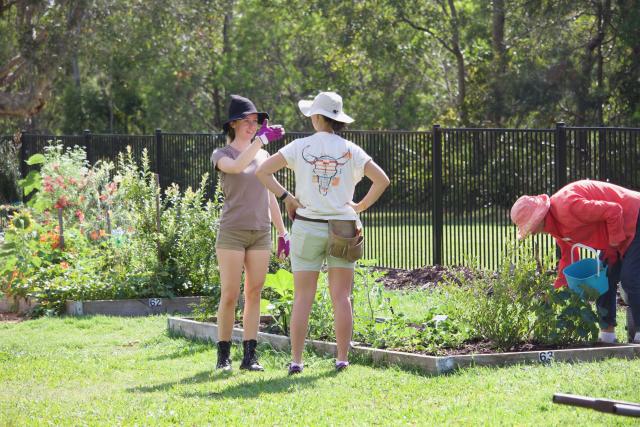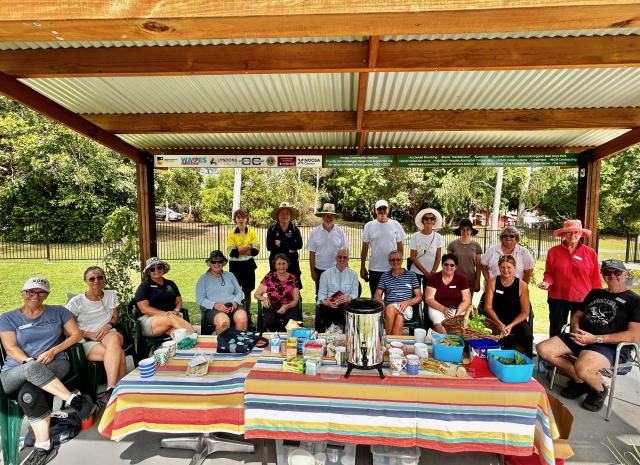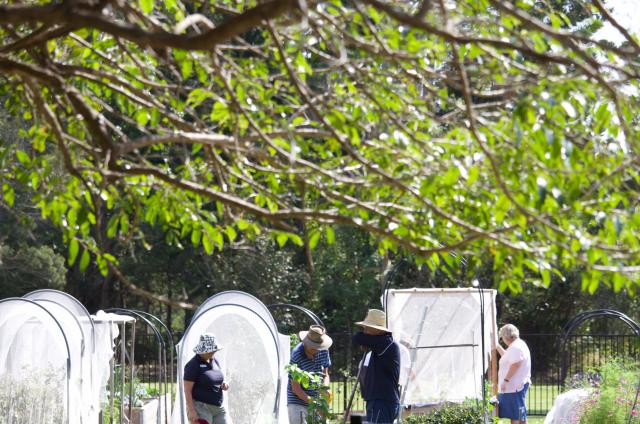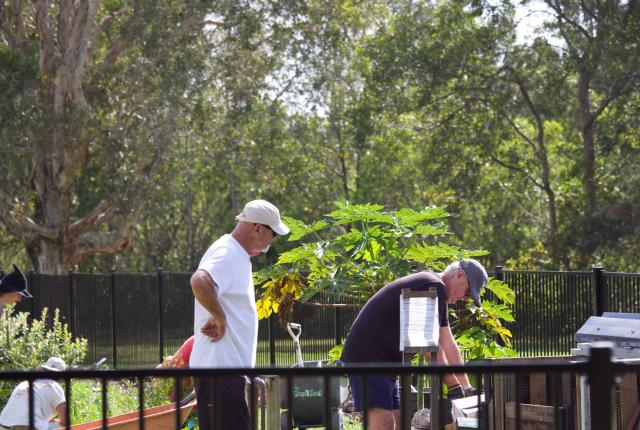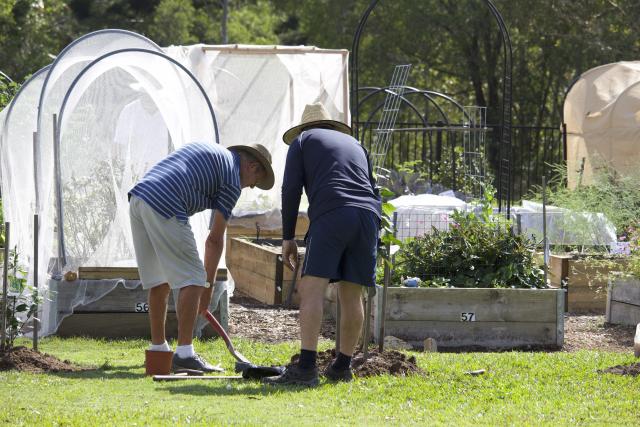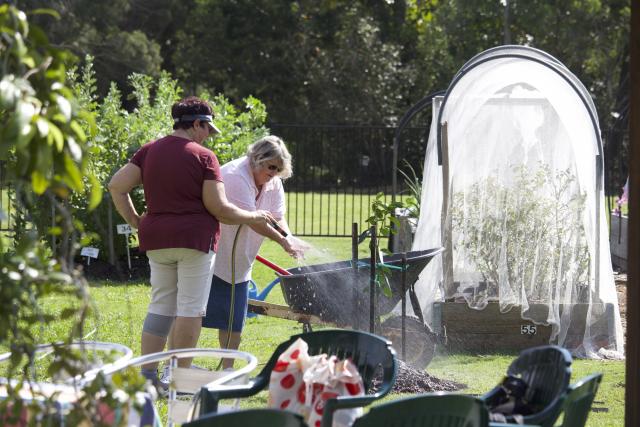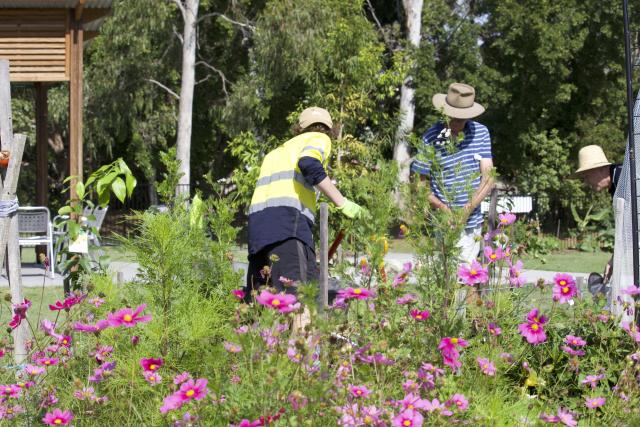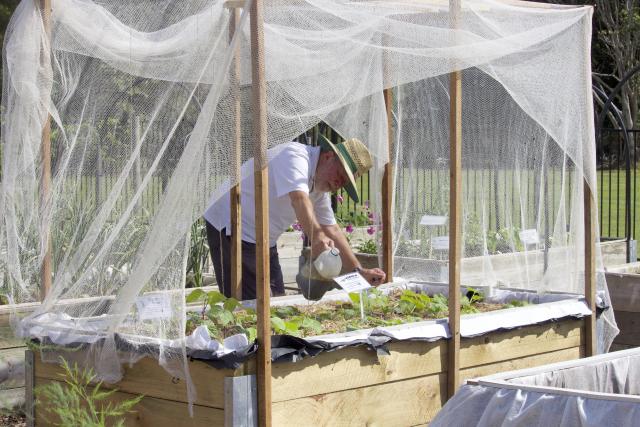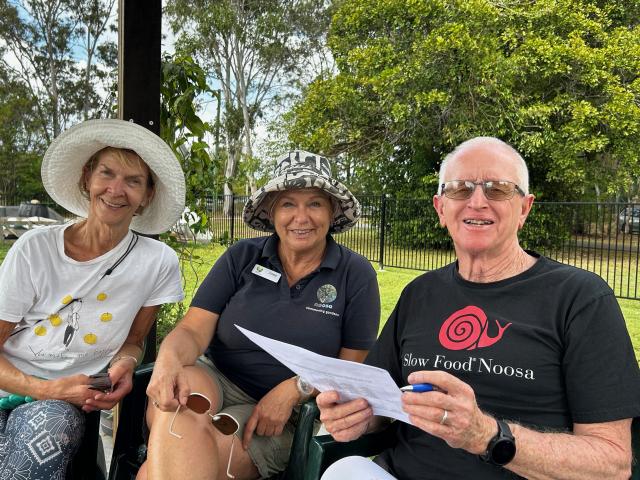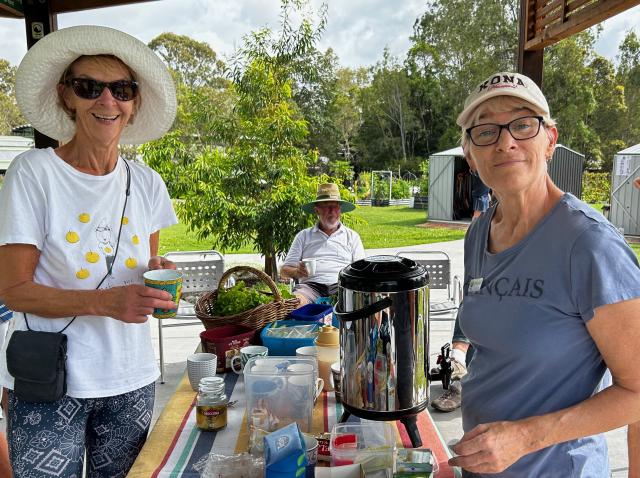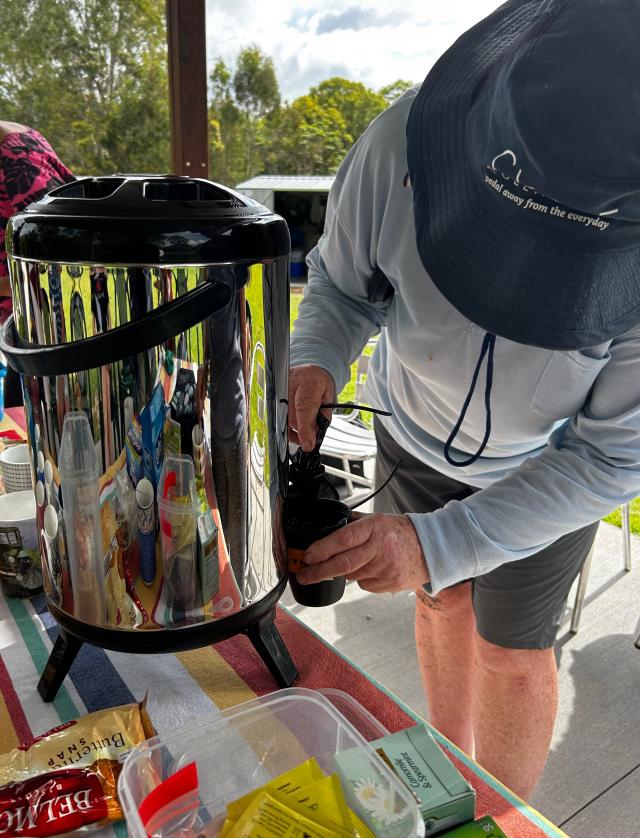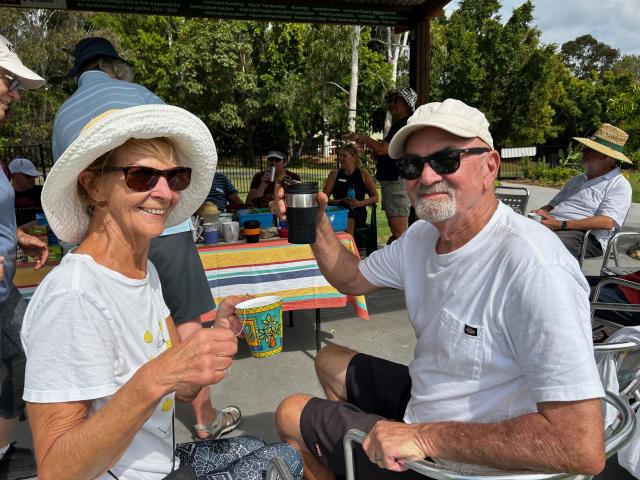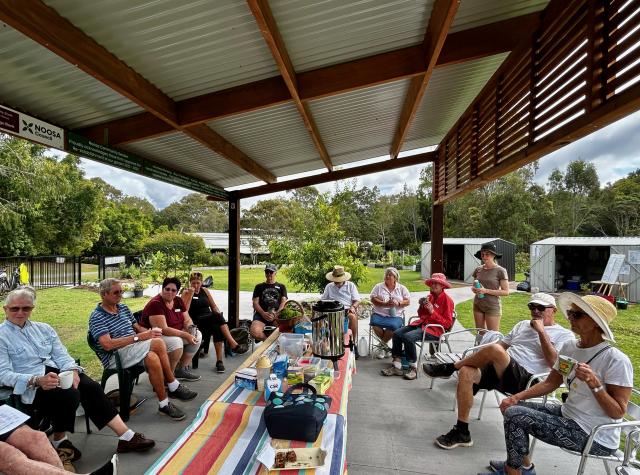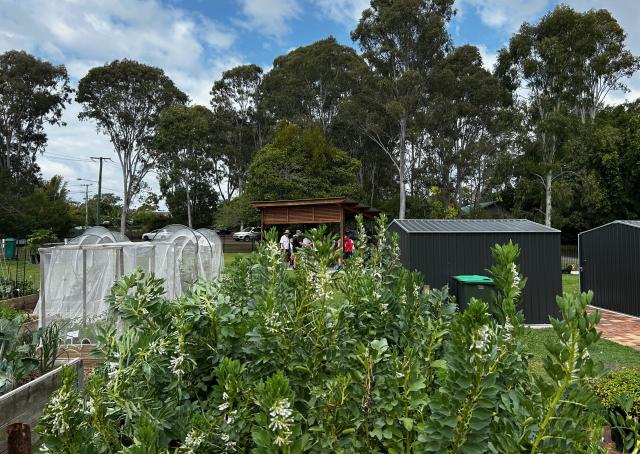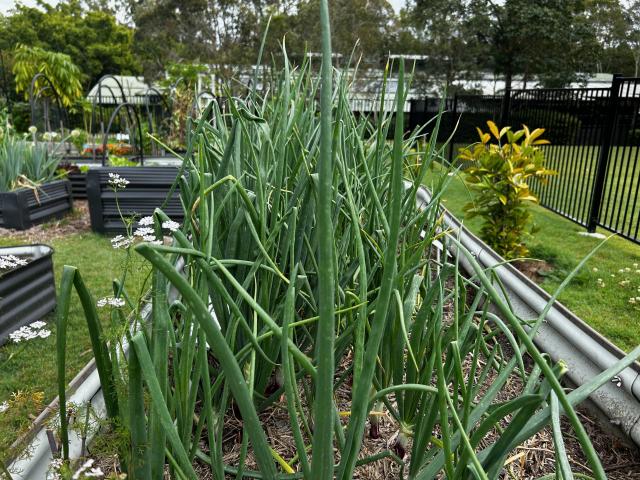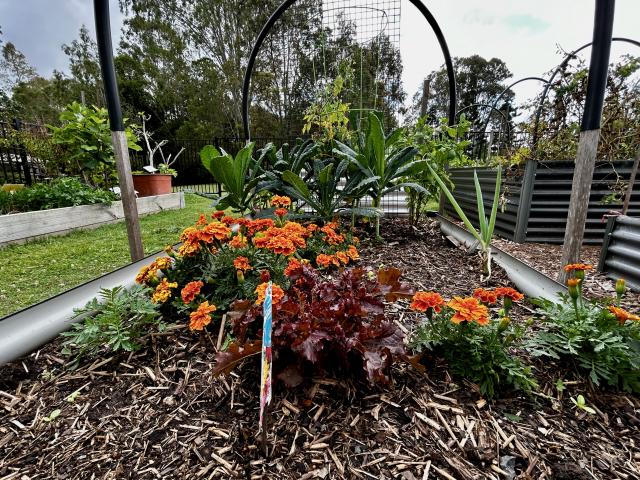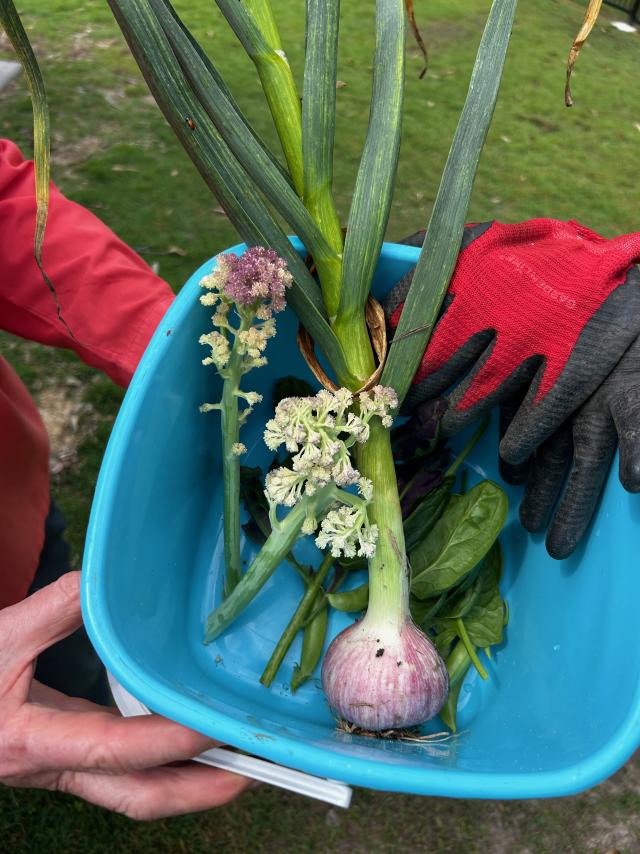If there is one thing about gardening it’s the way it can encourage the growth of a community.
That’s what is happening at Noosaville where an enthusiastic group are planting fruit trees and vegetables … and watching their fellowship, as well as their garden, grow.
It was a Friday morning and an important moment for Noosa Community Garden as Slow Food Noosa committee members were visiting to evaluate the group’s submission of meeting the Snails of Approval standards – good, clean food produced and presented in a fair and sustainable way.
The Snail is acknowledgement that a producer, retailer or restaurant is operating with integrity on these measures.
The initial reaction by Slow Food Noosa members was the garden would pass with flying colours, judged on the way it fits into the community and encourages people to participate in growing fruit, flowers and vegetables, not just for their own use but to share.
And its not just the produce … it’s a shared experience in so many ways.
A retreat, a place for meeting new friends, swapping ideas, skills and support.
The idea started in 2012 with a garden in Earl St at Tewantin.
As that initiative made headway, the popularity of having a community garden meant that it was taking on a new life.
Soon after, the gardens expanded into something for the whole community.
In March of 2018, Noosa Community Gardens became incorporated and was granted a lease by Noosa Council of a plot at Wallace Park and has, as they say, grown from there.
Garden club members Erika Hackett and June Copeman were involved in the early days of Slow Food Noosa – holding executive positions.
That has continued at the garden club, with Erika serving as social secretary and June as president.
As foundation members of Slow Food Noosa they started the first garden in collaboration with United Synergies to help young people.
Now they are seeking to gain the Snail of Approval for the garden club and its members.
There are about 60 members at the community garden, and they can purchase their own plot to grow veggies for the year.
“We’ve gone and visited other gardens to see how they set them up,” June said.
“We were told it’s really hard to get people to come and maintain the garden itself because they are often concentrating on their own individual plots.
“Here, we have reversed the ratio – a higher percentage of community garden space compared to individual plots – about 80-20.
“Hopefully that will continue on … it’s a mix that’s working well now.”
The club has a buddy system that inspires members to work together and to take pride in the garden.
“It’s purely voluntary,” Erika said. “You find the garden bed that you would like to look after for three months.
“And you might buddy up with two or three other people.
“You might not be at the garden the whole time. You can work out what to plant, who to look after it, when to start. That way you have some ownership.”
It’s a shared harvest in that the vegetables and fruit are always split between members.
“If there’s some left over we find someone who needs it,” June said.
“We meet every Friday to have a cup of tea, have a chat, plan what we need to go and buy … what plants.”
I stop and talk with some of the members working in the gardens. They grow beans, cucumber, squash and zucchini vertically so as to improve productivity in small beds but also to get a lot more airflow and cut down the risk of mildew.
Then as members gather at the pavilion they have a cuppa and share the crops, I talk to Lawrence Heraty.
He’s from the US and has been in Noosa for seven years.
“I first came to Australia in 1978,” he said. “I was living in London, but born and raised in Chicago.
“I had been travelling around, working, then went to Victoria and around Australia in ’78.
“Back to London for a couple of years … that’s where I met my partner and then we were in Victoria for another 13 years.
“We were in the inner-Melbourne suburbs but also down the Mornington Peninsula.
“Southern California was the next spot – near San Diego.
“Here, we live just down the street. We have been enjoying life in Noosa.
“There’s a lot of great parts of the world I’ve seen or experienced and Noosa is very good.
The garden club? This is my first day, so I’m a rookie.
“They took me right off the street. It’s a great concept.
“I do some other volunteering as well. I was at OzHarvest at the Noosa markets of a Sunday, also with the Salvos.
“I love gardening, I love plants. It’s a self-developed interest. I have a lot of beautiful plants at home, mostly succulents,
“We’ve had a couple of shots of growing fruit and veggies but the possums have a likeness to them and beat us all the time.
“I was just walking by and people were here, like now. So I thought I would see what this is all about.
“I had no idea … they welcomed me in and here I am.”
There are many groups as well as individuals who drop by to experience what is going on.
June said the garden club was seeking a Snail of Approval because Slow Food was all about things that are critical.
“Good, clean, fair and sustainable is what they practice.
“The garden started in 2012 in conjunction with United Synergies in Tewantin. That was at Tait Cottage.
“It was a program to engage with youth to learn about gardening.
“They would come along every week and permaculture teacher Leonie Shanahan would guide them, with the help of volunteers.
“It was a Slow Food Noosa garden and in 2018 became incorporated as Noosa Community Garden.
“We have a couple of groups that come in – the Endeavour Foundation is one and they have an allocated garden area. They will come two or three times a week.
“It’s been the best activity they have ever been able to do with their clients.”
The idea of a Snail of Approval is to test the connection of producers and retailers with the land and where or how the food is produced.
The awarding of a Snail indicates they are part of the Slow Food movement, which is represented world wide.
“If you go to a restaurant or event and you see the snail, you will know they have been awarded the Snail of Approval,” Rod Lees said.
Since being granted the land on a lease, the club has arranged sheds, composting bins, mushroom compost, raised garden beds and wicking beds.
There’s an element of permaculture or companion planting as well.
It’s more than just gardens … it’s a gathering spot for people who like gardening to meet in harmony, retreat from day-to-day life, and shared companionship.
“We produce what is available depending on what’s in season,” Erika said.
There is a chart showing the growing seasons, June adds.
“But not all seedlings are suitable for the sub-tropical climate here. We have become a lot more savvy with that.”
For Erika, it’s about the taste of fresh produce.
“We don’t use any pesticides or anything. Everything is natural.
“We’ve just been picking the snow peas, and as we are picking them, we’re eating them.
“It’s the same with the strawberries.”
June explains that everything is totally organic and fresh.
“There’s lots of love and hugs as well,” she said.
“No nasties at all, no chemicals.
“The nastiest we get is maybe using some vinegar and water, some salt.
“We have a young fellow here who has done some research and he’s in charge of the strawberry patch – heritage strawberries.
“They are so sweet. But something was eating them from underneath so he created some cardboard beds for the fruit to sit in, and a mix of detergent and water.
“So the insects cannot eat them.”
The garden club puts high emphasis on sustainability and low impact. Composting is a big part of what they do.
“We get our scraps donated from the general public, IGA and Flannery’s,” June said. “It’s just superb.”
Erika agrees. “The composting is working a treat … not gluggy, not smelly.
“We don’t have any pests … we had a python once but thought that was quite good.”
The garden club has good connections with a lot of organisations and restaurants, as well as other community groups.
“We run some workshops,” June said. “We’re a not-for-profit group but do fundraise.
“The past 12 months have been spent getting on our feet.
“Members consume the harvest. We do that on a Friday … we share it.
“Everyone takes a bit of this, a bit of that. Generally we don’t have enough to sell.
“In the past some ginger and turmeric has gone to Tewantin Market Garden and to Bekky Dart at Big Heart Bamboo at Belli Park.
“She’s turned it into pastes and jams.”
Erika mentions that community and school groups visit the garden quite regularly.
“Just this week a group of about 20 walked past and I said they were welcome to come in.
“They were a walking group and had noticed the progress as they had seen us at Tait Cottage before.
“So I took them on a tour. They were all interested in what we are doing here and the progress we’ve made.”
June said another group was from Sunshine Beach State High School – for those who have difficulty with being in the classroom all of the time.
“They come here and it is now in their curriculum.
“That’s been a really positive thing.
“Everyone gets garden beds with bed buddies … it means someone can share a garden bed.”
The garden gets help from local farmers such as Oz Garlic for the garlic bulbs that have been planted up, from Eastwell Farms for mushroom compost and cow manure, from Eumundi Meats and Cooloola Berries.
“Everyone here is a volunteer,” June said. “They are available for training young people and mentoring.
“Some are under the NDIS program and are looking for some work experience to pick up skills before they enter the workforce.
“The Australian Institute of Trade College came along and helped us with all of these garden beds. Their input goes onto their CV and they pick up practical experience.
“They came along, 20 at a time, to help us. We had the timber stacked up ready for them.”
The garden operates under a philosophy of fair treatment of everyone.
“As our charter, we have it as a place of rest and recreation,” June said. “We have looked at having a policy for those with their own agenda.
“We are very inclusive. We don’t want people falling out with others.
“So we have ways and systems of doing things to keep us harmonious.”
So, what of the future?
“We had our official opening in May,” June said, “and now we are planning more garden beds.”
That includes putting stuff on the wishlist, Erika said.
“We will have events, workshops, encourage people to come along and have a fun day.”
That will include selling plants at fundraisers.
“It’s a really nice place to be,” June said. “Friday morning is our big group meeting.
“We meet sometimes on Sunday and are looking at Wednesday evenings for people to come into the garden. But it’s open any time for anyone to walk through and have a look.”
Erika said it was surprising how one member might pop in during the week, then someone else would drop by and wander around.
“People walk in and drop their compost off for us.
“They walk around the fence with their buckets and empty it into the green bin. There’s a brown bin for carbon – cardboard, shredded paper, newspapers, egg cartons.
“It’s all labelled.
“In this way we are helping the community become more aware of what can be done in recycling.”
It seems fitting that the snail is the representative symbol of Slow Food Noosa, the community organisation that was instrumental in setting up the garden 11 years ago and providing the garden with the fundamental principles of good, clean and fair, local and sustainable.
The snail moves slowly but surely and with direction … and that is what Noosa Community Garden has been doing.

